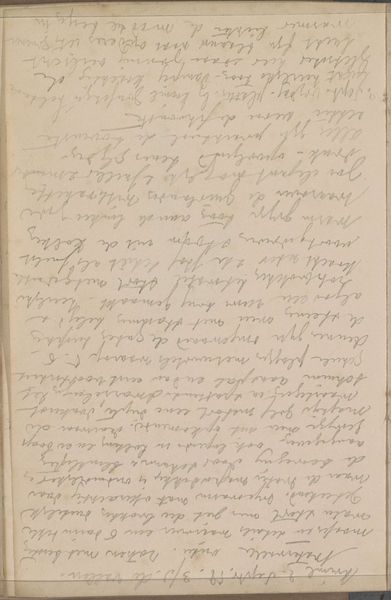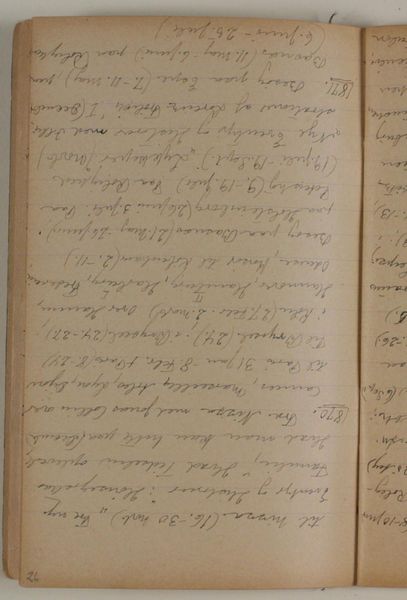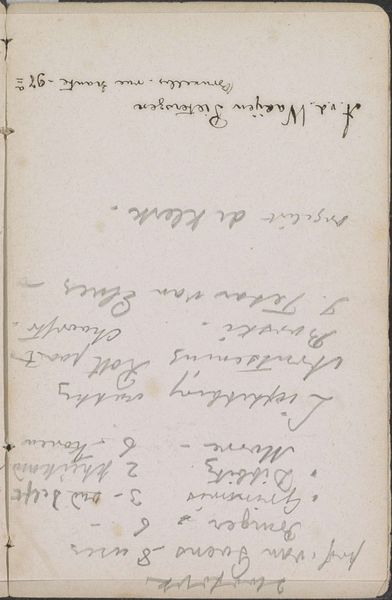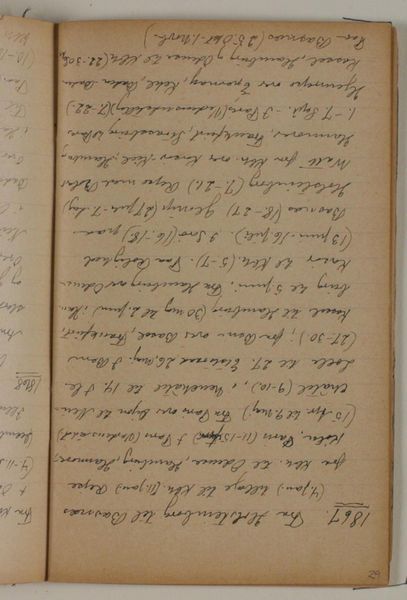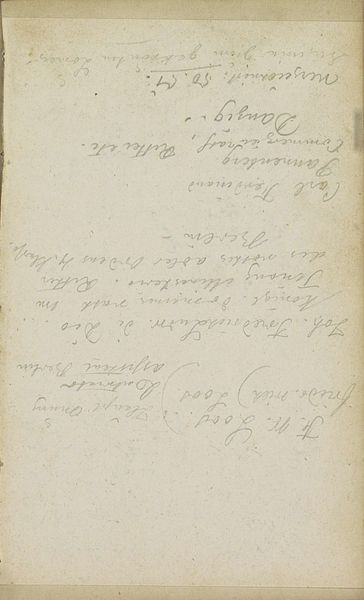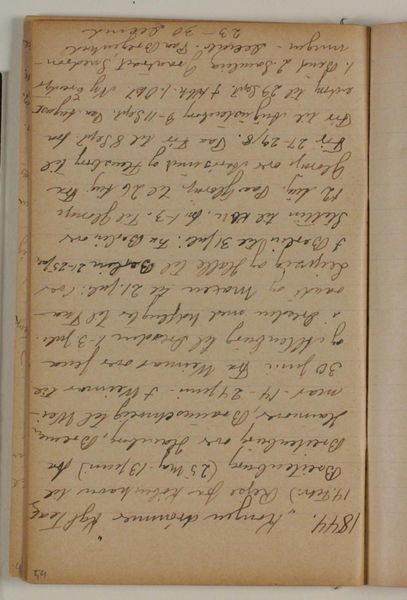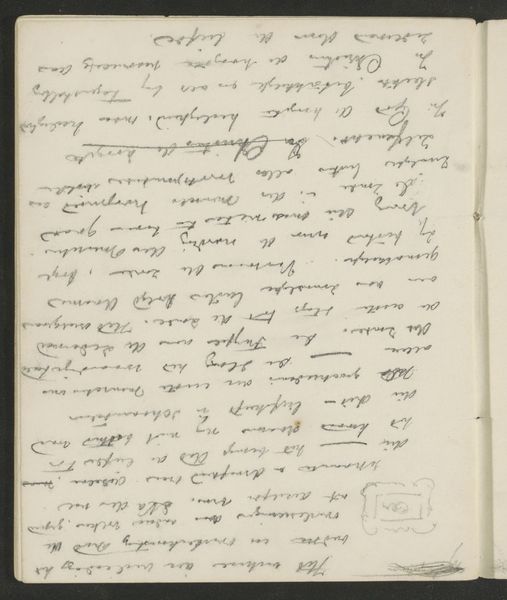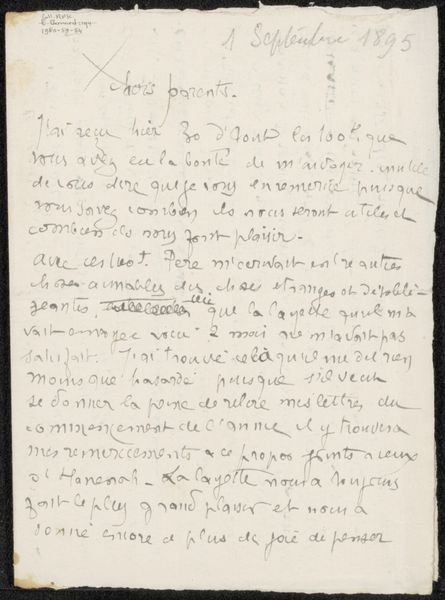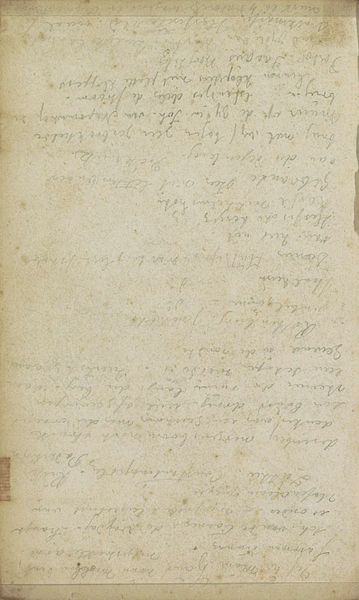
Copyright: Rijks Museum: Open Domain
Curator: This piece, "Notities over het Bodenmeer" or "Notes on Lake Constance", was rendered by Johannes Tavenraat in ink on paper between 1858 and 1859. Currently, it resides here at the Rijksmuseum. Editor: My initial impression is one of intense intimacy, the scale making it feel like a personal document. It evokes a subdued, almost secretive atmosphere. It’s like glimpsing a private journal. Curator: Indeed. The medium itself—ink on paper—is crucial. Consider the Romantic era context. There was a widespread fascination with nature, emotion, and individual experience. Landscape sketches like this became a space to process personal encounters with the natural world. Editor: Right, and ink's fluidity lends itself well to capturing transient moments. But I'm struck by the seemingly random nature of the text itself. What does the presence of writing indicate here, materially speaking? It blurs the boundary between purely visual art and textual documentation. Curator: Precisely. Tavenraat, I imagine, wasn't just passively recording a landscape. He was actively engaging with it through writing, layering observations, feelings, and perhaps even theoretical ideas on top of what he saw, reflecting an emergent sense of self. This aligns with a broader Romantic emphasis on selfhood. Editor: It certainly undermines traditional notions of the artist as simply a detached observer. Instead, Tavenraat integrates himself into the scene, transforming it into a hybrid work—part travelogue, part sketchbook, part personal reflection. And one can only guess at what social, political or scientific views affected this layering. Curator: Absolutely. And by leaving it raw, unfinished, we’re invited into his creative process. These kinds of raw documents show us how artists were actively re-evaluating what they were producing, and who they wanted that production to impact, as well as what they wanted their artistic voice to actually say. Editor: It makes you ponder the physical act of writing in the landscape, as well as consider how these processes alter both art and the artist simultaneously.
Comments
No comments
Be the first to comment and join the conversation on the ultimate creative platform.
